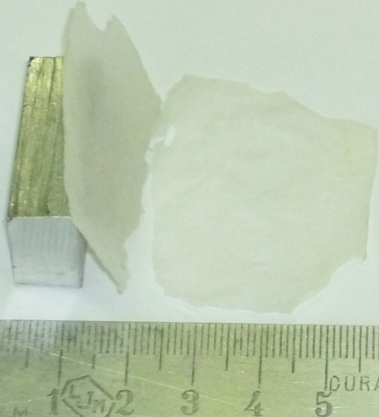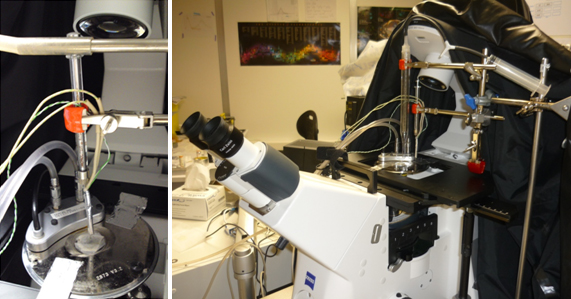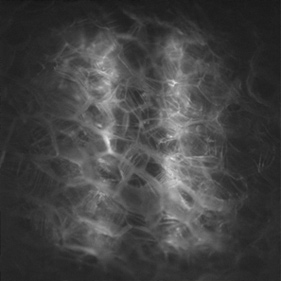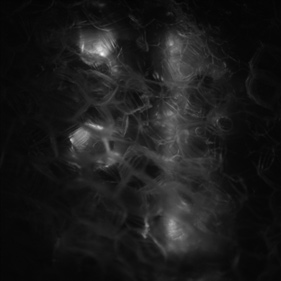Will it soon be possible not to dread climbing on the scales after eating French fries? Potato chips that are crispy and tasty but not greasy ... a dream! A dream that the research group headed by Olivier Vitrac, a researcher at INRA AgroParisTech on the Massy site, as well as staff on the DISCO beamline, are aiming to achieve by trying to understand a crucial stage in frying, which depends on the final oil content of the food being fried. How? By studying, under the microscope, the fluorescence emitted by potato strips bathed in hot oil ... Warning: the synchrotron is being turned into a deep fryer.
French fries, potato chips or crisps, "nuggets" and sweet or savory fritters: today 10 to 25% of the products we eat have been fried. Even if the young rejoice, their parents are not so happy, as most are now aware of the risks to health of the consumption of food too rich in fat. Everyone knows that frying involves an oil bath ... not exactly a "low fat" concept! The food industry has understood this and is now looking to offer fried foods containing less fat. But this must not be achieved at the expense of flavor: the consumer is partial to French fries that are both crisp and melting - two qualities that are difficult to imagine being obtained in the absence of oil.
A crucial step in the recipe
To be precise, both the taste characteristics and oil content of the food depend on a short step in the preparation process, i.e. when it leaves the frying oil. On the one hand, this is when the water still present on the surface of the food, evaporates, causing rapid dehydration of the crust, which then takes on the fragile glassy texture that makes the surface crisp. On the other hand, the French fry dipped in hot oil is, contrary to what one might think, not yet greasy, due the pressure of water in it that prevents oil from entering its tissues. But once out of the oil, the water it contains condenses and the French fry will behave like a sponge absorbing the oil by capillary action and suction. Although the crust needs to absorb oil for the French fry to remain soft, it should not absorb too much to meet the criteria of "low-fat French fries".
But how does this absorption take place? What coarse does the oil follow through the food tissue?
Using analysis techniques and an experimental set up on a branch of the DISCO beamline, it was possible to view the flux of microscopic oil in real time through the crust of "food-models" under conditions simulating this cooling step following their removal from hot oil.
When oil and French fries are fluorescent
The samples analyzed were thin strips of potato dehydrated beforehand in steam heated to 115°C, to mimic a fried food crust without having to use oil (Figure 1). These "pseudo crusts" were then bathed in hot oil (125°C) on a hot plate (100°C), itself placed under the lens of a microscope (Figure 2).

Figure 1 : a potato strip sample used in the study to \"simulate\" a fried food crust.
Potato cells fluoresce naturally, due to the presence of phenolic compounds in their walls, when illuminated with UV light of appropriate wavelength (280-290 nm), an energy range accessible with such brilliance only on the DISCO beamline. In addition, a specific dye (diphenylhexatriene) was added to the oil so that it also fluoresced under these conditions, but at a wavelength different from that of the cells in the sample, in order to be able to distinguish between the two.

Figure 2 a-b : experimental set-up under an inverted microscope. The sample is placed on a horizontal temperature-controlled plate. The syringe placed above the sample is used to add fluorescent oil under equally controlled temperatures. The UV beam illuminates the sample from below, and the detector records the fluorescence emitted by the sample.
It was thus possible to see both the shape and tissue defects in the crust, and the path followed by the oil when it came into contact with this crust. The researchers could thus follow in real time and in 3D the microscopic phenomena that accompanied this "exit from the fryer."
Three dimensional images obtained after deconvolution1 were then used to construct a computer model that simulated oil penetration into food according to the state of tissue damage - for example due to freezing.
Towards new industrial scale strategies
The results, whether these are the fluorescence microscopy images or the simulations that can be obtained from them, show that oil percolates through cells (plant cells, in this case) in a very heterogeneous way, both in space and time. It is not the amount of oil surrounding the food that will affect how much in-depth or lateral absorption occurs, but the quality of the food tissues: everything depends on whether the cells are damaged and form a "sink" or "channels" in the tissues.

Figure 3 : observation of a \"crust\" sample two to three cells thick, in fluorescence mode (magnification x 10). After excitation of the sample by a UV beam with a wavelength of 295 nm, cell wall autofluorescence reveals the structure of the plant cells (UV emitted: 320-500 nm).

Figure 4 : the same cells excited by the UV beam after adding the oil. Fluorescence of the cell walls is detected, but also that of the oil (UV emitted: 400-500 nm), localized here in a few cells on the surface of the sample.
Based on these data, new strategies are proposed to reduce, in terms of the manufacturing process, the amount of oil absorbed by fried foods at this stage in their preparation.
This research forms part of the CIFRE thesis by Jean-Michaël Vauvre and the post-doctoral work of Anna Patsioura, in Olivier Vitrac’s research group.
- Deconvolution: an algorithm-based process used to treat the signal and image, notably in microscopy, to impr1ove the resolution and background noise of images.
